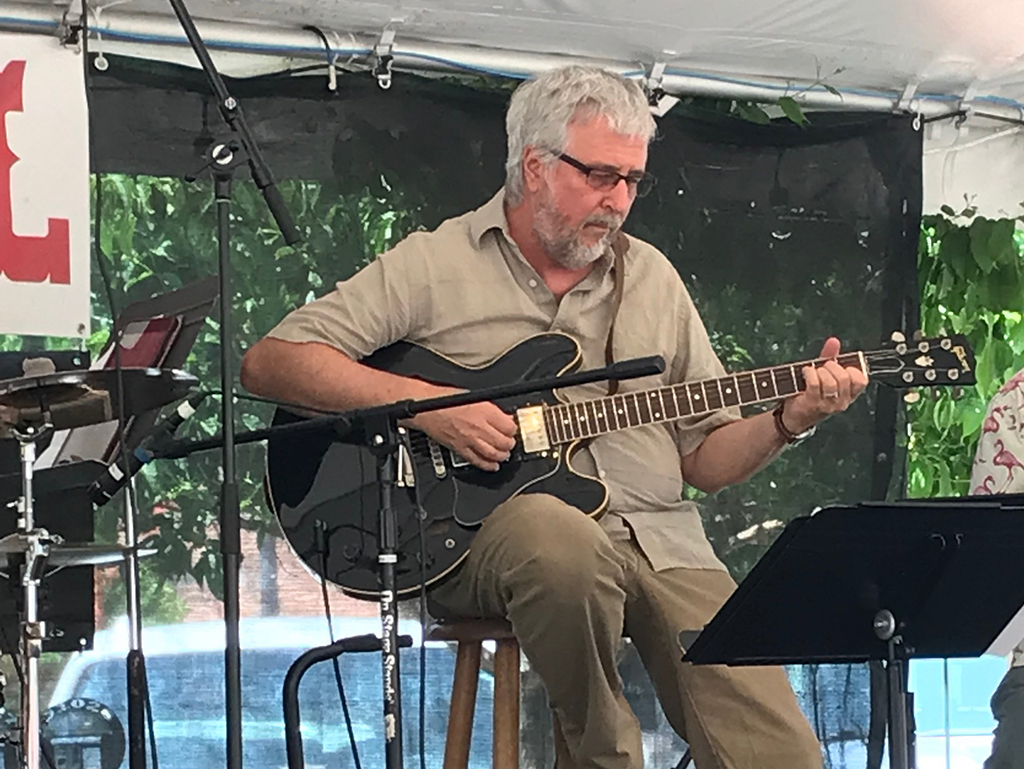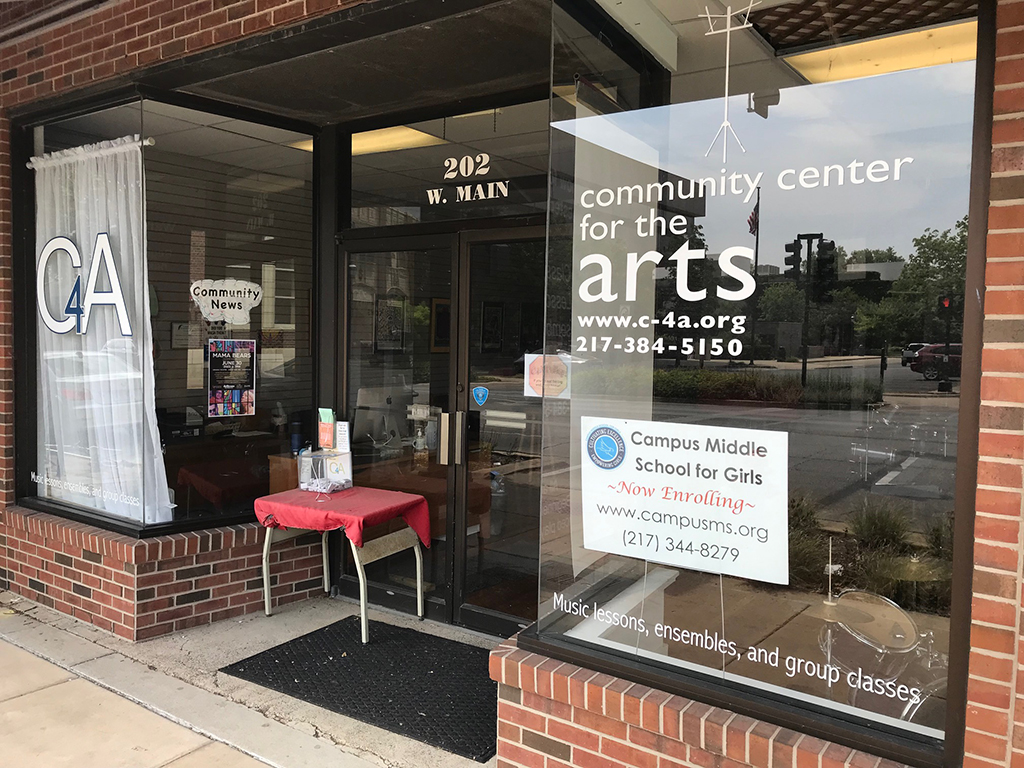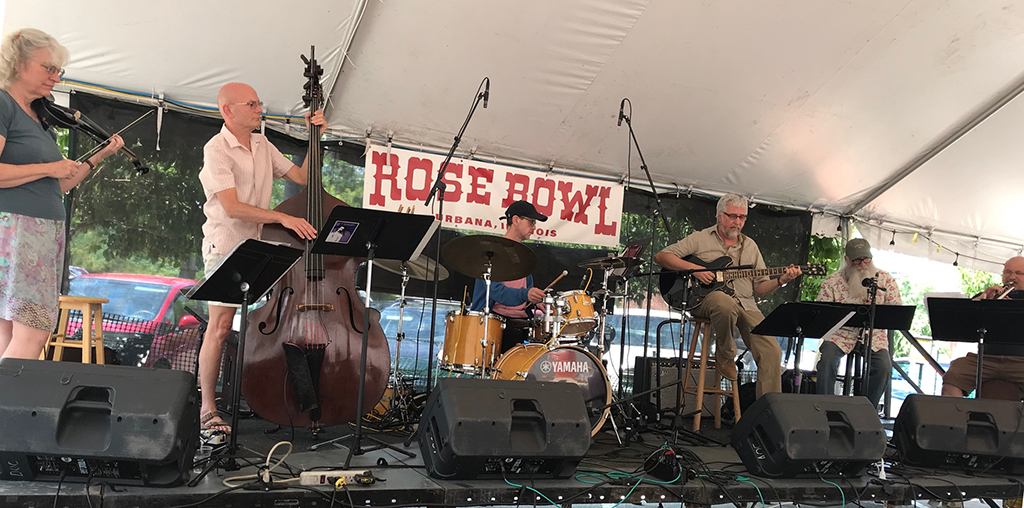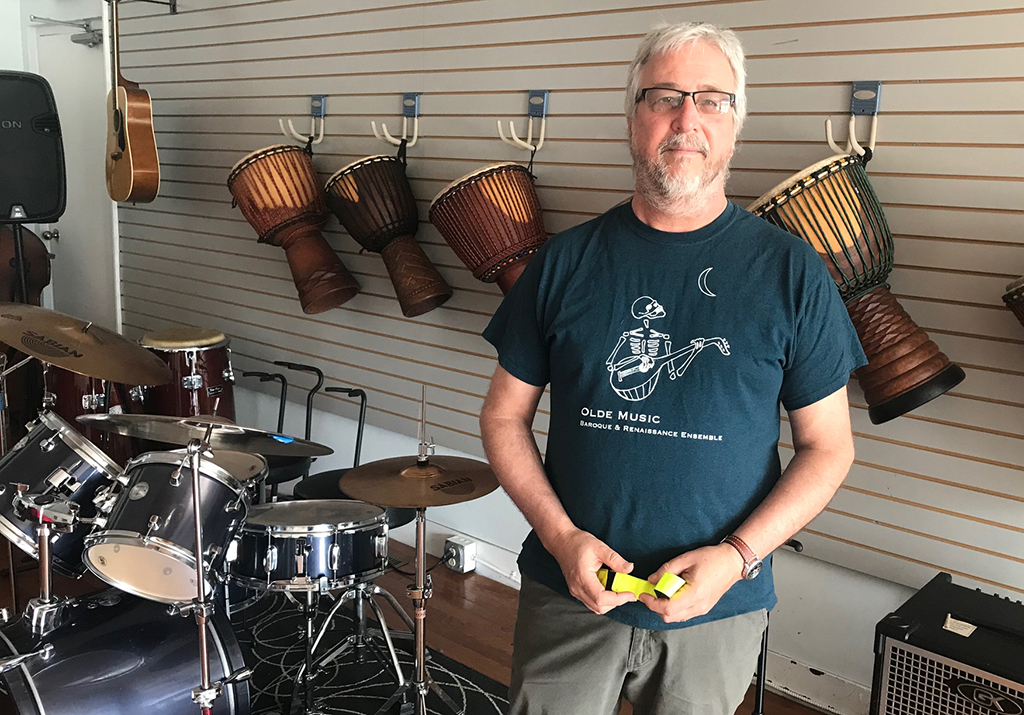I recently sat down with Tom Faux, music professor at Illinois State University and one of the founders of Community Center for the Arts (C4A) — an oasis for music lovers of all ages and levels of musicianship in the Champaign-Urbana area — and current electric guitarist in the local band, Robin and the Toad.
Some people play rock, some play country, some bluegrass; Faux has played all that plus classical, jazz, music of French Canadian origin, music from Central and Eastern Europe, Peruvian music, and he studied Cuban music in Havana. Take your pick — what would you like to hear?
Growing up in Maine, Faux was influenced by his mom, who played guitar and whose musical interests ranged from Joan Baez to Bach, and his dad, a jazz enthusiast and French Canadian fiddle player who had moved to work in the area. He began playing guitar in junior high and, while still in high school, began playing guitar with these different groups of fiddlers during fiddle contests. “I liked playing with the old guys,” he said. He found their music very compelling.
Following high school, Faux’s musical education included a two-year jazz program at the University of Maine and a bachelor’s degree in classical guitar. Between those two stretches of college, he played in a bluegrass band.
Nearing the end of his undergraduate degree, soon to be armed with his bachelor’s in classical guitar, he didn’t know what he was going to do. “I was going to paint houses and play some guitar. I was talking to one of my professors and he said ‘Well, you play a lot of different things. What are you going to do with yourself here?'” Faux told him he really liked playing music. “It’s my life,” he said. “I’m totally immersed in it, but what’s really interesting to me is what it does for people; how it pulls people together. I saw it in the French Canadian community. I saw it in the bluegrass community. I see it with rock and rollers. Everywhere, music is like the glue that holds people together. And I find that fascinating and we never really touched on it in my undergrad world.”

His professor then told him about the field of ethnomusicology: the study of the interaction between music and culture. He said, “If you’re thinking about graduate school, you might consider that.” He mused it over and decided to pursue a master’s degree from Tufts University in ethnomusicology.
But, there was also more going on than simply studying for a master’s degree.
“I was playing in a band with these guys I had met in my undergrad who are from Peru and Bolivia,” continued Faux. “We were touring around New England for about eight years playing Peruvian and Bolivian music. It’s such beautiful, compelling music. That ended up being the topic of my master’s thesis. That music became part of my world, too.”
Faux’s doctoral work was done here at the University of Illinois. He became part of the community, meeting other musicians and playing in bands. In 2009, he began working as a professor in the music department at Illinois State University in Normal. His background in ethnomusicology serves him well there. “I usually break the semester into three sections,” Faux explains. “The first is just vocabulary: rhythm, harmony, melody, form, texture; all that stuff. The second phase of the course is why we do it. I look at music from an evolutionary and biological standpoint as well as a healing standpoint. I also look at music from a religious/spiritual standpoint. There isn’t a religion in the universe that I’ve ever heard of that doesn’t deal with it somehow. Music is sacred. Music is profane. Music is diabolical. We look at music from a sociological and psychological point of view, and all of these things combined. What exactly is it and why is it that we do this thing? To me, these are the most fascinating questions.”
“If you think the Paleolithic musicians picked up a log and whacked another log and went ‘music, good’, bang, bang, bang, and eventually that evolved into a symphony orchestra, that’s not the way it was,” instructs Faux. “Music was there at the beginning of what it is to be a human being. It emerged around the same time that language emerged, possibly before. 43,000 years ago, somebody made a flute that you could play this five-note scale on, and it has continued until today. It’s pretty astounding.”

Faux thinks that all people are naturally musicians even though we may not view ourselves as such. “Many people have said to me ‘Well, I’m not really a musician. Those real musicians are the ones that get paid for it’, which is utter nonsense to me. It’s part of the underlying philosophy of C4A that you are a legitimate musician by birth and so just come in here and unlock it. That’s our job here.”
C4A had its beginning in 2006. Faux, along with Robin Kearton and Kelli McQueen, began giving lessons to students in the former Jumers Hotel in Lincoln Square Mall. In 2012 they moved to their permanent location at Race and Main Street in Urbana. Now, 23 faculty members serve about 250 students a week, ranging in age from three years old to those in their mid-80s. Bands include the Marvelous Cretaceous Band, a 25-member band mainly made up of adult players, the Bodacious Band (primarily a fiddle band for kids), an Olde Music Group that plays Renaissance and Baroque music, an African Drumming group, a country band, and sometimes a jazz band.

Faux now plays in a band called Robin and the Toad. It features a group of professional musicians: Faux on guitar, Robin Kearton on fiddle, Sol Baer on clarinet, Sal Percoco on trumpet, Todd Gallagher on bass, and Jeff Magby on drums. A few years ago, five of them were able to go to Havana, where they spent time studying Cuban music, which is now part of their repertoire. This is the band that plays French Canadian music, music from Central and Eastern Europe, and lots of music from Peru. They also play Italian film scores from the 1950s!
Faux plans to continue his work at C4A and Illinois State, and enjoy the time he has to relax and play his classical guitar on his porch. I enjoyed sitting down and talking to him and listening to the story of his musical journey.








